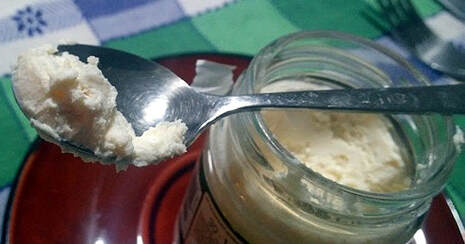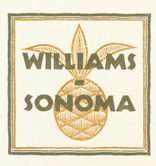 Lucas at 11, surviving the tasting of this evil cheese Lucas at 11, surviving the tasting of this evil cheese Ricotta forte is a traditional Apulian cheese, typically made at home under the kitchen sink or in a dark cantina (cellar), although can be found in supermarkets in Italy. Found in both Puglia and Basilicata, it might also be called Ricotta scanta, 'scante, scanta, ascuante, or "ashquant" in local dialects. Initially, it is made in the same way as ricotta, but using a strong flavored milk such as goat or sheep. The texture is similar to cream cheese, usually with an off-white color. It's definitely a cheese that spreads easily. The aroma coming from this cheese is not for the faint-at-heart, as we can attest to when confronted with ricotta forte one morning at a trullo bed & breakfast near Alberobello. One sniff snapped our heads back, but we spread it on our toast anyway, our host drizzling some honey on top, then we tasted... To be honest, it reminded me of when I was a kid and out bread developed mold, but that was bland compared to this stuff. The flavor is sharp as a Neapolitan criminal's stiletto, pungent, sour, bitter, with an intensity that burns your nostrils. This cheese is a total assault on your palette. Our eyes snapped open and then teared up. I got some on a sweet pastry sitting on my plate and later on when I bit into it, the whole sweet taste was ruined. It took literally an hour or two for our taste buds to relax back to normal. Many Pugliese still make this cheese today, a remnant from the days when shepherds came up with this devilish bastardization of the ricotta we all know and love. They placed the freshly made ricotta into small ceramic or glass jars, sprinkled with sea salt, then placed it under their sink or other dark place. A few times each week the lid is removed and stirred in a process that lasts for 3 months. As it matures it grows a fungus which gives this a flavor with more kick than any blue cheese you've ever tasted. It's a regional specialty that locals enjoy spreading on warm crostini, either plain or drizzled with honey or balsamic. In my opinion, it contrasts too much with sweet things like figs or grapes, but tomatoes and other savory items like anchovies are a better match. Watch the following video to learn how Ricotta Forte is made. It's in Italian with Italian text, but if you remember the words giorno (day) and mesi (months) you'll figure out how to make it and the time period intervals involved. In case you'd like to try it yourself, here is one place you can buy a jar. Enjoy! --Jerry Finzi |
Archives
May 2024
Categories
All
|





